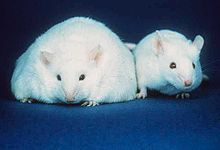From the pre-industrial carbon concentration of 240 parts per million, human activities have steadily increased the amount of carbon in our atmosphere to current levels of 400 parts per million. Carbon in our atmosphere interacts with oxygen to become carbon dioxide, CO2, which acts as a greenhouse gas. Greenhouse gasses are effective at trapping heat that is leaving from the surface of our planet. As a result, our planet gets warmer since less heat is able to escape to space and instead linger around in our atmosphere where it is then reflected back to the surface.
What changes could we be expecting?
We are aware that the increase of CO2 is causing global warming and scientists estimate that if we continue to release carbon at the same rate we are emitting now, there could be up to 4.5°C increase in global temperature by 2100.
A 4.5°C increase temperature does not sound like a lot but according to the IPCC report in 2007, this could bring 0.26-0.59 meters increase in sea levels and another study predicted a much higher increase in sea level of 2 meters by 2100.
Climate Central released numerous visualizations of what major cities around the world will look like after carbon emissions have had their affect on sea levels using recently published data.
What does that mean for us?
Vancouver, being a coastal city, is not safe from rising sea levels either. To prevent damages done to the buildings and infrastructures in the city, city planners recommend that the flood plains be raised by 1 meter than current height, to a total of 4.6 meters. They think that this change to the bylaws will provide safety net for predicted sea level increase of year 2100.
Lots of CO2 emissions come from fossil fuel combustion from industrial activities, however we could also do our part to reduce CO2 emissions in effort to reduce the impact on climate change we have. Simple steps we could take include reducing usage of personal cars and taking public transportation or biking instead. Remembering to turn off lights in unused rooms also help since producing electricity is also a big source of CO2 emissions.

Top 10 countries in danger from future sea rise
video by The Daily Conversation
Alana Lee










